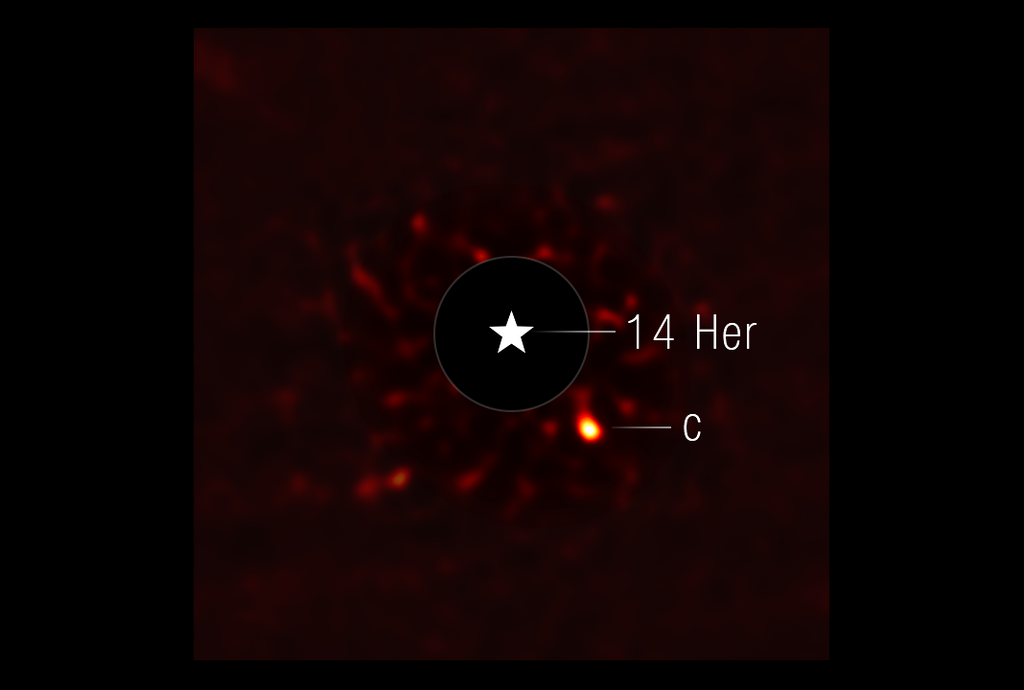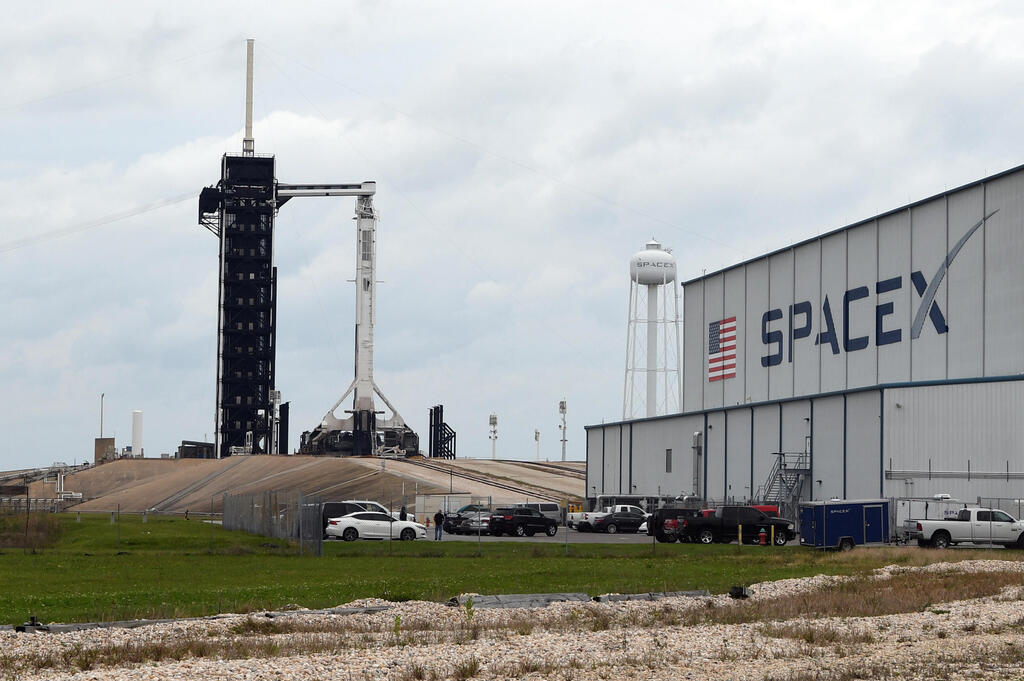An unusual planetary system comes into focus
Over the past thirty years, researchers have discovered around 6,000 planets in other solar systems. However, only a small fraction of these have been captured in images. Most were identified using indirect methods—such as detecting the periodic dimming of a star’s light as a planet passes in front of it, or by observing the gravitational pull a planet exerts on its star. Now, scientists in the United States have successfully photographed one such planet using the James Webb Space Telescope, unveiling features of a remarkable solar system.
The star 14 Herculis is a sun-like star, slightly smaller than our own, located nearly 60 light-years away in the constellation Hercules. It hosts two known planets, typically named 14 Herculis b and 14 Herculis c. While 14 Herculis b is too close to its star to be seen directly—lost in its glare—14 Herculis c orbits farther out, with an estimated average surface temperature of minus 3 degrees Celsius. Detecting such a cold body is extremely challenging for the James Webb Space Telescope, which measures infrared radiation and is sensitive to the heat of the captured object. Yet, for the first time, researchers succeeded in capturing an image of it.
3 View gallery


A new frontier in exoplanet research, owing to the ability to observe relatively cold planets. Planet 14 Herculis c as captured by the James Webb Space Telescope
(Photo: NASA, ESA, CSA, STScI, William Balmer (JHU), Daniella Bardalez Gagliuffi (Amherst College))
"The colder an exoplanet, the harder it is to image, so this is a totally new regime of study that Webb has unlocked with its extreme sensitivity in the infrared," said William Balmer, a Ph.D. student at Johns Hopkins University and first co-author of the published study. "We are now able to add to the catalog of not just hot, young exoplanets imaged, but older exoplanets that are far colder than we’ve directly seen before Webb."
The new study uncovers fascinating details about the system’s structure. Unlike most known solar systems, where planets orbit in the same plane, the two planets here follow orbital paths tilted 40 degrees apart—forming an unusual X-shaped configuration. Researchers are now trying to understand what caused this unusual alignment, speculating that a third planet may once have existed and was violently ejected, altering the orbits of the remaining planets.
A private mission with an Israeli touch
The fourth private mission by Axiom Space to the International Space Station (ISS), known as AX-4, was originally scheduled for launch last week but has faced multiple delays. After being pushed to last Wednesday, Axiom and SpaceX announced another indefinite postponement due to a liquid oxygen (LOx) leak from the first stage of the Falcon 9 rocket that was set to carry the crew into space.
Commanding the mission is veteran astronaut Peggy Whitson, who holds the U.S. record for the most cumulative time in space—675 days. She is joined by three astronauts sponsored by their respective home countries: Shubhanshu Shukla from India, Sławosz Uznański-Wiśniewski from Poland (representing the European Space Agency) and Tibor Kapu from Hungary.
Among the mission’s scientific objectives is an Israeli-led experiment investigating upper-atmospheric phenomena that occur during thunderstorms—transient events that flash above the clouds and last only fractions of a second. The experiment is led by Prof. Yoav Yair of Reichman University, who provides the astronauts with exact instructions for capturing these split-second events by coordinating lightning storm data with the ISS's position. Hungarian astronaut Tibor Kapu is expected to carry out the imaging, but the entire AX-4 crew was trained for the experiment by Yair and Israeli astronaut Eytan Stibbe, in the hope that others will also contribute during their free time.
The experiment, in its current form, has been ongoing since AX-1, nearly three years ago, when it was first carried out by Israeli private astronaut Eytan Stibbe during the Rakia Mission. The Rakia Mission later became a public benefit company, and has continued to support the experiment’s inclusion in subsequent Axiom missions. While AX-2 yielded disappointing results, AX-3 produced promising data. For AX-4, the experiment will be conducted in collaboration with Prof. József Bórof the Hungarian Institute of Earth and Space Sciences.
The Rakia Mission is also contributing to the Indian component of AX-4, assisting in the development of educational content and helping to establish a visitor center and mission control room at the massive CMS school in Lucknow, India—where astronaut Shukla studied.
Expanding the constellation
American company Rocket Lab has successfully completed another launch of a radar satellite for the Japanese company iQPS. The satellite was launched aboard Rocket Lab’s Electron rocket from its launch site in New Zealand and entered its planned orbit—at an altitude of 575 kilometers—shortly after liftoff. This is the fourth satellite Rocket Lab has launched for the Japanese company and the third launch this year in this series, part of a deal to launch eight satellites over the course of this year and next.
iQPS is developing a satellite constellation to provide radar imaging services to its clients. The goal is to establish a 36-satellite network offering global coverage, which would enable real-time tracking of surface changes—ranging from the movement of ships at sea to herds of animals on land.
Rocket Lab is steadily establishing itself as a leading player in launching small- to medium-sized satellites using its Electron rocket. Last week’s launch marked the 66th flight of the Electron and the eighth so far this year. The company has secured several contracts with firms deploying satellite constellations for military and civilian data purposes, including BlackSky, Synspective and OroraTech and it aims to reach 20 successful launches in 2025.



